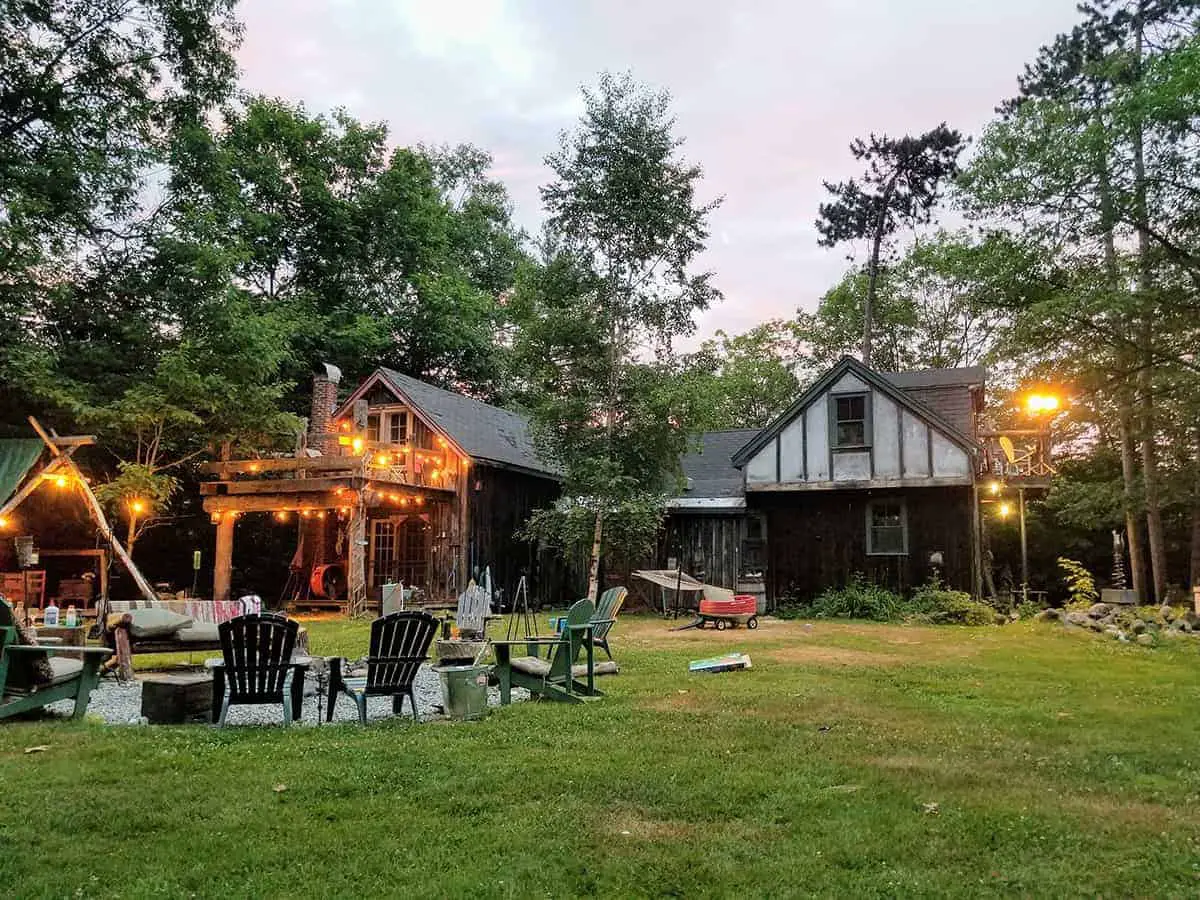How to Fix Lawns That Are Choking
Is your lawn in need of a revamp? Modern homes are built with little to no consideration of yard design, which leaves us feeling helpless or turning to professionals for help again. The good news is that there are things you can do yourself if you’re determined to get off your knees and back on two feet once more.
So, what are some signs your lawn might be choking? Nine signs your lawn may be choking include brown patches, mushrooms, dead or weak grass plants, thin or under-productive grass plants, brown tips on grass blades, dead spots on flowers or shrubs, watercolor grass blades, poor growth or failure to thrive, or dead insects and pests in your grass.
Let’s take a closer look at what causes these common issues as well as how to fix them!
1. Brown Patches
If you have spots in your grass where the green has turned yellow or brown, don’t panic just yet. Brown patches can be a sign of soil compaction where the roots of your grass couldn’t access as much water as they needed.
As such, these areas will die and turn brown as the blades retreat underground where they are safe from the sun’s discerning eye. It can be caused by heavy footfall or machinery, pets staying in one spot for too long, and even excess nitrogen in your soil (a side-effect of using commercial fertilizer).
If you’re sure that these spots haven’t been there more than two weeks and they aren’t increasing in number, then it’s likely that this is just temporary, and watering alone should fix it up right quick.
 2. Mushrooms
2. Mushrooms
If you’ve ever found strange little mushroom-looking bumps in your lawn, you’re not alone. These are commonly caused by underground fungi venturing up to the surface when conditions (i.e. temperature, moisture, and nutrient availability) allow them to flourish.
If they stay underground, these little cretins won’t do any real damage; they’ll just look unsightly for a while as the mushrooms grow and die back down again over time.
3. Dead or Weak Grass Plants
If there’s been a gradual thinning of grass in parts of your lawn but brown patches aren’t present, then chances are you’ve got yourself some weak grass plants. This is usually due to excessive weed competition that leaves your grass without enough nutrients or sunlight to properly function.
In other words, you might be giving your lawn a haircut but not providing it with the tools it needs to keep itself healthy! If you suspect this is the case, then get yourself some weed killer or introduce some bugs that eat other plants’ roots (also known as “beneficial insects“) to put a stop to these pesky interlopers.
4. Thin Or Under-Productive Grass Plants
If there are patches of grass in your yard that aren’t growing as fast or tall as others, then chances are they’re either under-producing or simply too old. This could be due to poor soil conditions where nutrients are lacking or – more commonly – due to drought which can stress out plants, leaving them vulnerable to disease and pests alike.
Cut these parts of your lawn down to about 4″. This will offer them a new lease on life while allowing your yard to remain aesthetically pleasing after all!
 5. Brown Tips On Grass Blades
5. Brown Tips On Grass Blades
Lean-looking grass that doesn’t seem to be growing very well can also be an indication of poor nutrient availability. This is often due to fertilizer being washed away by excess water during heavy rainfall. If this is the case, try amending your soil with some organic compost before giving it another dose of granulated fertilizer.
6. Dead Spots On Flowers & Shrubs
Once again dead spots can indicate poor root development stemming from a lack of nutrients or moisture. This makes it difficult for plants to gain the upper hand against potential invaders like fungus and other diseases.
If you’ve got clovers and dandelions on your lawn, this is a good sign that the nutrients and moisture levels of your soil are the first-rate so start inquiring as to what could be stunting the growth of your plants!
7. Watercolor Grass Blades
If there are bleached-looking spots along with grass blades where they roll themselves up – almost like crumpled paper – it’s likely due to summer heat or harsh winds. You can try giving them some shade or shelter from the wind for a bit but water might do the trick too. Just don’t let them dry out altogether!
8. Poor Growth Or Failure To Thrive
This is similar to thin, weak grass plants but it usually indicates that something is actively harming the grass in question. If this is the case, it’s most likely due to pests like lawn mites or fungal infections that are difficult to treat with simple remedies like fertilizer or water alone.
9. Dead Insects & Pests In The Grass
Grub worms, spiders, and grubs all make nests beneath your grass plants where they chow down on detritus left behind by decomposing plants. They’re not usually harmful – especially when they’re not eating too much of your prized turf.
However, these critters can be indicators of unhealthy soil conditions that could have been caused by excessive use of chemical fertilizers or pesticides which kill off good bugs along with bad ones! So in short: if you’ve got a healthy lawn, you’ll have a healthier environment too!
 How to Fix Your Lawn
How to Fix Your Lawn
Even if it may seem impossible to fix your choking lawn, there is a way to bring it back to life! Choking is when foreign weeds, shrubbery, or grasses take over your well-manicured lawn.
The best way to avoid this is to carefully monitor areas prone to weed growth such as adjoining roadsides. If you notice any signs of choking, here are a few more tips about what could be causing them and how to stop them.
Ensuring Good Turf Conditions
If an area has weeds and dead patches do not automatically assume the cause is pests; consider drought and poor soil conditions as possible sources of distress. A few small weeds in an otherwise healthy lawn are not worth bothering with, but if the problem spreads then you may begin to see bare spots to loss of turf.
Patchy, spotty areas are usually caused by a lack of sunlight or poor soil conditions. Ensure the turf is getting enough sun and that there’s enough topsoil to support plant growth. A healthy lawn will grow even green across its entire expanse; if there is a visible difference between areas that appear lusher then this could be another sign that foreign weeds (and grasses) have begun to take over.
Areas between plants and shrubs will grow at different rates due to sunlight exposure; mow the lawn frequently to make sure all areas of grass are equal in height.
Sunlight
Sunlight is essential for plants to grow properly. Grass needs at least six hours of direct sunlight per day to survive. If you find yourself in a position where your lawn cannot get more than six hours of sunlight daily it may be time to consider changing things up with new shrubs, maybe even building an arbor over your front walkway will help cover some additional area!
Weed Treatments
A healthy lawn should not look dried out and dull no matter how long it’s been since you had time to water it. If your lawn is looking like straw, dying, or yellowing this too might be a sign of choking weeds taking over! Thick foliage does not typically grow overnight either.
If the grass in your yard is getting thicker and taller this is another sign that weed growth may be occurring. Eliminate foreign weeds by treating individual plants with herbicides found at local nurseries. You can also call on professional help to ensure that all of the roots are treated so nothing reemerges once they spray.
Figuring Out Your Lawn
Whether it’s pests, weeds, sunlight, or something else, with every issue with your lawn there is a solution! Try to determine what the exact cause of your issues is, and try some of the recommendations above to see if they work. The progress might not happen overnight, but your lawn will surely thank you in the long run!

